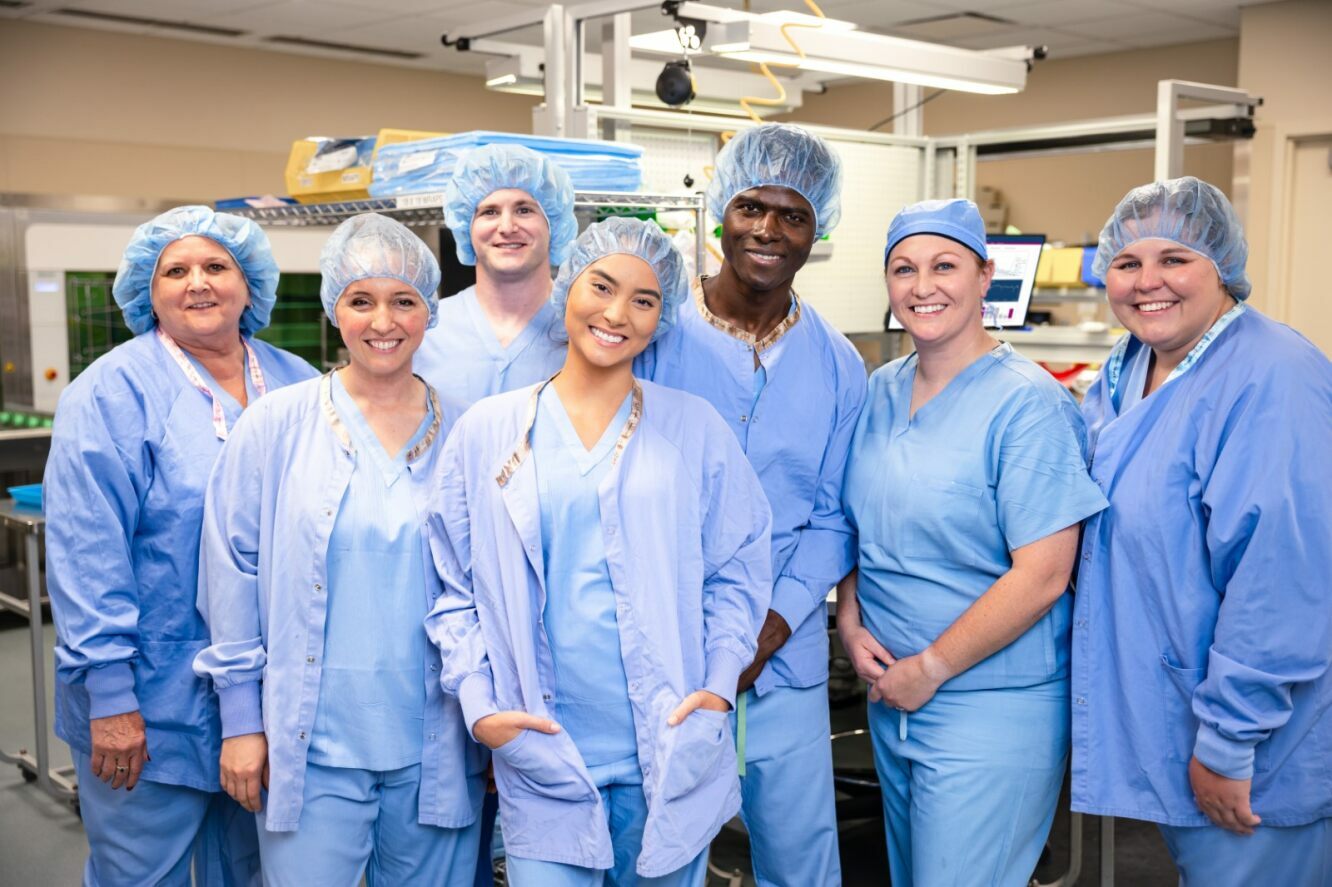Sterile processing is the technique, method, and action performed to clean, disinfect, sterilize, store, and maintain the reusable and surgical medical instruments used every day in medical facilities around the world. Sterile processing can also be a passion, a way of life, and a tight-knit community.
One thing that’s important to mention is sterile processing is not easy. There are thousands of instruments to remember and many of them have unique reprocessing instructions to follow. These are called the manufacturer’s Instructions for Use, also known as IFUs. Being familiar with IFUs is a large part of finding success in a sterile processing department (SPD). Even if you don’t have them memorized, knowing where to find an IFU for a particular instrument puts you on the road to success.
That's an overall view of sterile processing, but there are a multitude of sub-sections that make up the process as a whole. The basic steps in sterile processing are:
1. Pre-cleaning2. Decontamination (Manual and Mechanical Cleaning)
3. Inspection
4. Assembly
5. Sterilization OR High-level Disinfection
6. Transportation
7. Storage
8. Maintenance
These are the main steps in the reprocessing workflow that ultimately lead to patient-safe surgical instruments. Building up your reprocessing workflow based on IFUs, guidelines, and standards makes it easier for your whole team to do the right thing for the patients every time. There are many tools to help keep track of SPD data, processes, and people. One such tool is a surgical instrument tracking system, such as CensiTrac. They have the ability to store data for years in an easily accessible way, and SPDs can update processes and IFU information quickly.
But what does it mean to say, “reprocessing workflow?”
Reprocessing Workflow
The Importance of Pre-Cleaning
Before beginning any work in the sterile processing department, instruments should be pre-cleaned by the end user. Most instruments have steps in their IFUs that address how this is accomplished. If there are no steps, most of the time wiping an instrument down with sterile water is sufficient to remove gross debris.
But why is pre-cleaning important, if the instruments are going to the decontamination area anyway? If you currently work in an SPD, you know how hectic decon can get, and you know that, despite your best efforts, instruments will sit in their case carts longer than desired. When blood, bodily fluids, and other debris is left on instruments, the instruments can start breaking down.
This article from AORN speaks about the benefits and risks associated with pre-cleaning instruments. The patients benefit because the bioburden is more thoroughly removed from instruments before being sent to decon. The facility benefits because instruments will break down faster if gross debris is left on them, so pre-cleaning ultimately saves money. This is a critical step in the reprocessing cycle, and must be done before the instruments reach the sterile processing department.
Decontamination
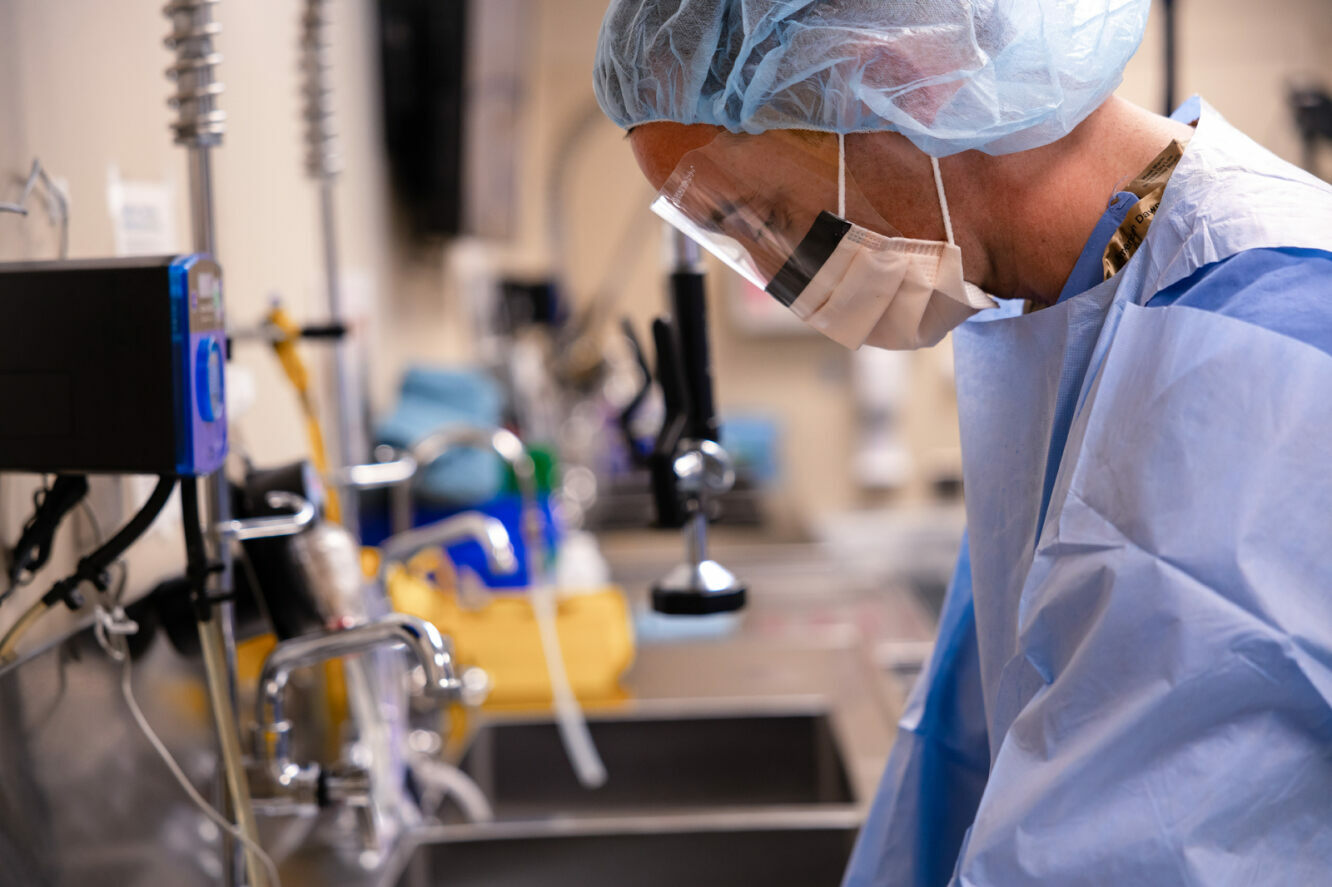
Merriam-Webster defines the word decontaminate as “to rid of contamination.” A more industry-specific definition featured on Moab Healthcare comes from the Healthcare Sterile Processing Association (HSPA) that defines decontamination as “to make safe by removing or reducing contamination by infectious organisms or other harmful substances; the reduction of contamination to an acceptable level.” Over the years, every sterile processing professional has heard the phrase “glorified dishwasher” in reference to decontamination, or “decon,” for short. This is an outdated semi-joke made because most of a technician’s time in decon is over a sink, manually cleaning surgical instruments.
To succeed in decon, a technician should have knowledge about many things, including:
- how to calculate detergent concentrations
- various chemical properties
- the functions of the mechanical equipment
- infections, diseases, and how microorganisms spread and propagate
- what instruments require disassembly, and how to do so
Decon is loud, busy, and dangerous. There is a delicate balance of water, electricity, chemicals, and mechanical equipment that must all be maintained properly. Decon is broken down into 2 broad categories: manual and mechanical cleaning. The majority of IFUs have instructions for both methods, and it’s up to the facility to incorporate those instructions into the everyday workflow.
Manual Cleaning
Manual cleaning is just what it sounds like: physically removing the gross debris from surgical instruments after use. This is a critical step in the reprocessing cycle, because if the bioburden is not removed, the device cannot be properly disinfected and/or sterilized. The CDC states that the two essential components are friction and fluidics. Friction means instruments should be scrubbed (under the surface of the water so that bacteria are not aerosolized) until visibly clean OR for the IFU-recommended amount of time. This applies to external surfaces and internal surfaces of instruments, such as lumens or channels. Fluidics refers to the chemical detergent in the wash sink. Detergent manufacturers develop their chemicals to specifically tackle bioburden, and allowing the instruments to be in contact with those chemicals is critical to the manual cleaning process. Following manual cleaning, it is critical to rinse the detergent off all instruments before continuing to the next step.
Mechanical Cleaning
Mechanical cleaning specifically addresses the machines in decon that assist with removing gross debris. Not all SPDs are fortunate to have mechanical cleaning options, which is why manual cleaning is so integral to ensuring each instrument is safe for the next patient. There are plenty of times when the technician cannot reach certain areas of an instrument. In this case, if the IFU allows it, the technician places that instrument into an ultrasonic cleaner. Ultrasonic cleaners, or “sonics,” use a process called cavitation to clean tiny areas of the surfaces of surgical instruments. Instrument manufacturers typically provide specifications for temperature, sonic hertz, and amount of time the item can be exposed to this process.
The other common method of mechanical cleaning is the washer. Typically these are washer-disinfectors, which clean instruments via a method called impingement (think about a pressure-washer, but smaller). These machines use temperature, detergent concentration, and water pressure to remove any further debris that was missed with other methods. Many washer-disinfectors then have a dry time, followed by “thermal disinfection,” where the temperature in the washer is raised to a certain degree (around 90° Celsius or 194° Fahrenheit) that ensures safe handling of the instruments.
It's important to note that not every instrument can be safely cleaned by mechanical means. The most common reasons are:
- the temperature is too high,
- the item cannot survive being submerged.
In these cases, it is critical to follow the IFU for reprocessing. Many instruments that fall into this category are more expensive than the typical stainless-steel forceps and scissors. Facility leadership will not be pleased if the $100k flexible endoscope is heat-damaged because it went through the washer-disinfector.
High-Level Disinfection
Some instruments follow the decontamination cycle into packaging and sterilization, but there are some instruments that are not approved for sterilization. This may be from the IFU, or it might be a facility policy (high turnover of flexible endoscopes doesn’t allow for the time necessary to sterilize them). Whatever the case may be, high-level disinfection (HLD) is an option for semi-critical instruments. If the instrument enters a sterile cavity, it MUST be sterilized. But if it does not, as with a colonoscopy procedure, it is allowed to go through an HLD process.
There are manual and mechanical HLD processes. In section 8.2.3.1 the latest edition of AAMI Standard ST91-2021, which speaks to flexible and semi-rigid endoscope reprocessing, they state that “an automated process can be more efficient and consistent than a manual process…” In section 8.2.4.1 of that same document, it states “manual processing is not recommended but if necessary due to facility or resource limitations…” Many have interpreted this as a step in the direction where manual HLD processes will be stopped entirely. While the industry is not prepared for that, there have been studies that show utilizing an Automated Endoscope Reprocessor (AER) reduces the risk of user error in reprocessing, thereby leading to a safer outcome for patients.
It must be noted that the HLD process uses chemicals that, if not handled carefully, can cause damage to the sterile processing technician. Safety Data Sheets (SDSs) and the IFUs for all chemicals must be followed carefully. This is another reason to utilize automated or mechanical HLD equipment when possible.
Sterilization
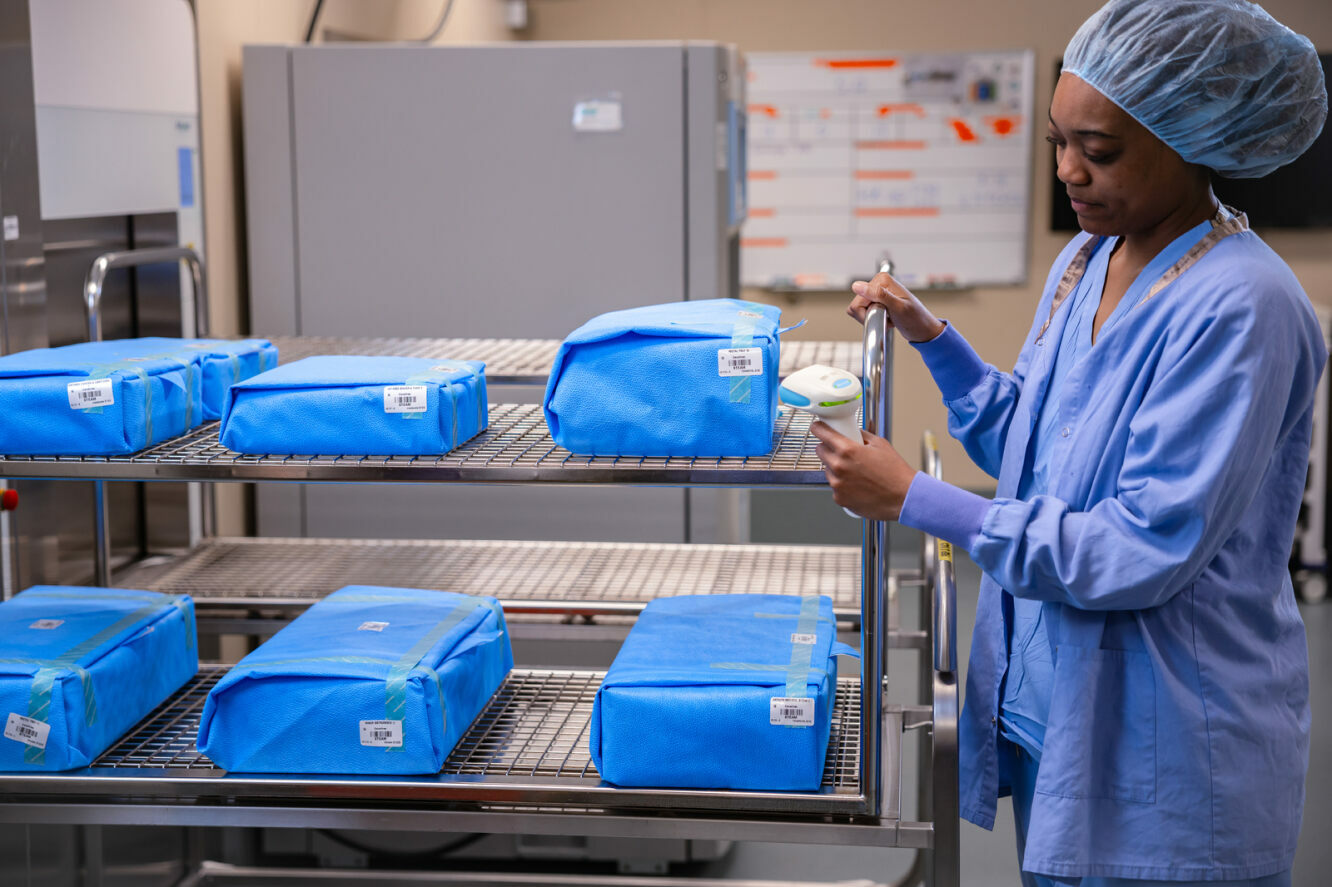
According to the CDC, sterilization is defined as “a process that destroys or eliminates all forms of microbial life and is carried out in health-care facilities by physical or chemical methods.” Throughout history, several methods of sterilization have been created, but the most common method is steam sterilization. The device that completes the steam sterilization process is called an autoclave. The first autoclave was invented in 1876 by Charles Chamberland, a student of Louis Pasteur. The name comes from the Greek prefix auto-, which means “self,” and the Latin suffix clavis which means “key.” The reasoning behind this name is that the autoclave locks itself with the pressure it creates.
Advancements in technology have given the sterile processing industry more methods of sterilization which use chemical compounds. Ethylene oxide (ETO) was a method invented for items that cannot handle the high temperature and pressure of steam sterilization but has seen a decline recently. This is mostly due to the lengthy processing time (12+ hours per cycle) and the potential health hazards to patients and staff. ETO is a known carcinogen, so reprocessing instruments using this method is being phased out of most facilities.
Hydrogen peroxide (H2O2) sterilization has become more popular, as it is cheaper, faster, and less hazardous than ETO. There are several modalities for this type of sterilization, including vapor and plasma forms. Technicians must still be careful however, as the concentration is higher than store-bought hydrogen peroxide and may cause chemical burns if it has not properly completed the evacuation stage in the sterilizer.
Sterilization requirements include proper temperature, pressure, and exposure time. If these criteria are not met, sterility cannot be assured for the items being processed. Modern sterilizers will monitor these parameters during the process and, if there is a failure, will sound an alarm and print out the data for the technicians to evaluate. There are multiple factors that can lead to a sterilizer load failure. Some of these factors include:
- steam quality issue,
- mechanical failure in sterilizer,
- electrical failure.
It’s important to be familiar with the sterilizer being used, how to troubleshoot it, and the process for calling the manufacturer repair technician to evaluate the situation.
Transportation
The transportation of surgical instruments has rules to prevent cross-contamination or compromise of the times. For soiled instruments, they must be transported back to decontamination in a solid, water-proof container clearly marked with the biohazard label. For sterilized instruments, they should be handled as few times as possible to reduce the risk of compromise. They should never be slid around on shelves and should be carried carefully and kept level.
There are also rules about transporting instruments between facilities. Used instruments are considered to be "medical waste" and are regulated by each state's environmental and health departments. When transporting sterile instruments, temperature and humidity environments should be monitored per AAMI ST79, Section 6.
Storage
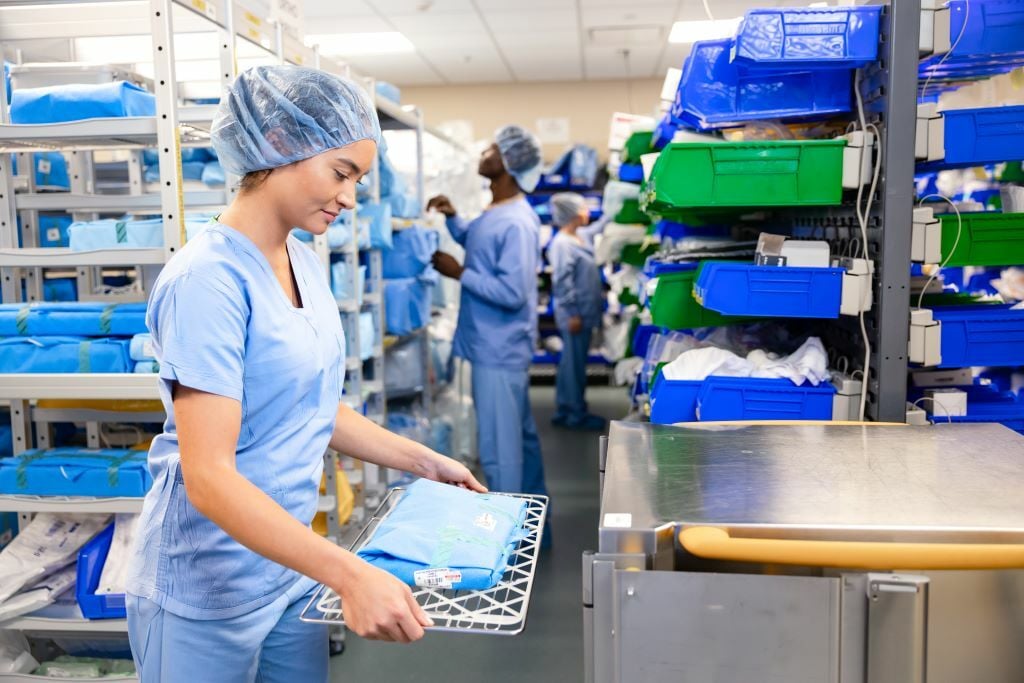
Now that the instruments are cleaned, disinfected, and sterilized, what do you do with them? Sometimes the instruments are needed right away and are taken to the operating room or clinic. But most of the time, the facility needs to store them until they are used again. There are strict parameters for the sterile storage of surgical instruments.
AAMI ST79 section 11 speaks to the storage and transport of sterile surgical instruments. There are temperature, humidity, and airflow requirements for all sterile processing spaces, including where sterile items are stored. And yes, this is still important even if SPD doesn’t store the items. The Joint Commission answers a question regarding sterile storage and what those parameters may be. It’s important to note that parameters are different for each facility, depending on the age of the building, where it is in relation to sea-level, and more. The facility should have its own policy regarding sterile storage and sterile processing technicians should be familiar with it.
AAMI ST79 also speaks to physical storage spaces and the requirements for those areas:
- clean and dry,
- items should, at minimum, be stored 8-10 inches above the floor, 18 inches below the ceiling OR sprinkler heads, and 2 inches away from the wall,
- stored in a way that wrapped packages are not beneath rigid containers on the same shelf,
- and positioned so that packaging is not crushed, bent, compressed, or punctured.
There are more details in this standard that outline storage requirements. Facilities should have access to copies of all AAMI standards to ensure staff are familiar with them.
Maintenance
On top of all the steps involved in caring for surgical instruments, they also must be maintained in optimal working order. A surgeon cannot properly cut tissue if the scissors are dull or chipped. Sterile processing professionals must inspect every instrument that they handle, to ensure it will do its job perfectly. This inspection is completed after decontamination but before HLD or sterilization. Some facilities call it the “Assembly” area or “Prep and Pack.” Whatever the term, it’s where each instrument is inspected and tested to determine if it’s suitable for use.
There are ways to test
- scissors
- needle drivers/holders
- forceps
- laparoscopic instruments
- power instruments
- cords
and many more.
Manufacturer’s IFUs will dictate what needs to be tested on specific instruments, but many generic instruments must still undergo rigorous inspection.
If an instrument fails a test or inspection, it cannot be allowed to be used on a patient. The risk is too great and might lead to more surgical complications in the future. The defective instrument has to be pulled out of circulation to be repaired or replaced, depending on the issue. Some facilities have a backstock supply of instruments, or a peel packed instrument can be pulled to replace the item in a sterile set.
It is highly recommended to have a maintenance or repair contract with a vendor to routinely inspect and repair instruments throughout the year. This will be determined by the facility, but it’s important that they also inspect sets and repair anything that is in need.
Quality Assurance in the SPD
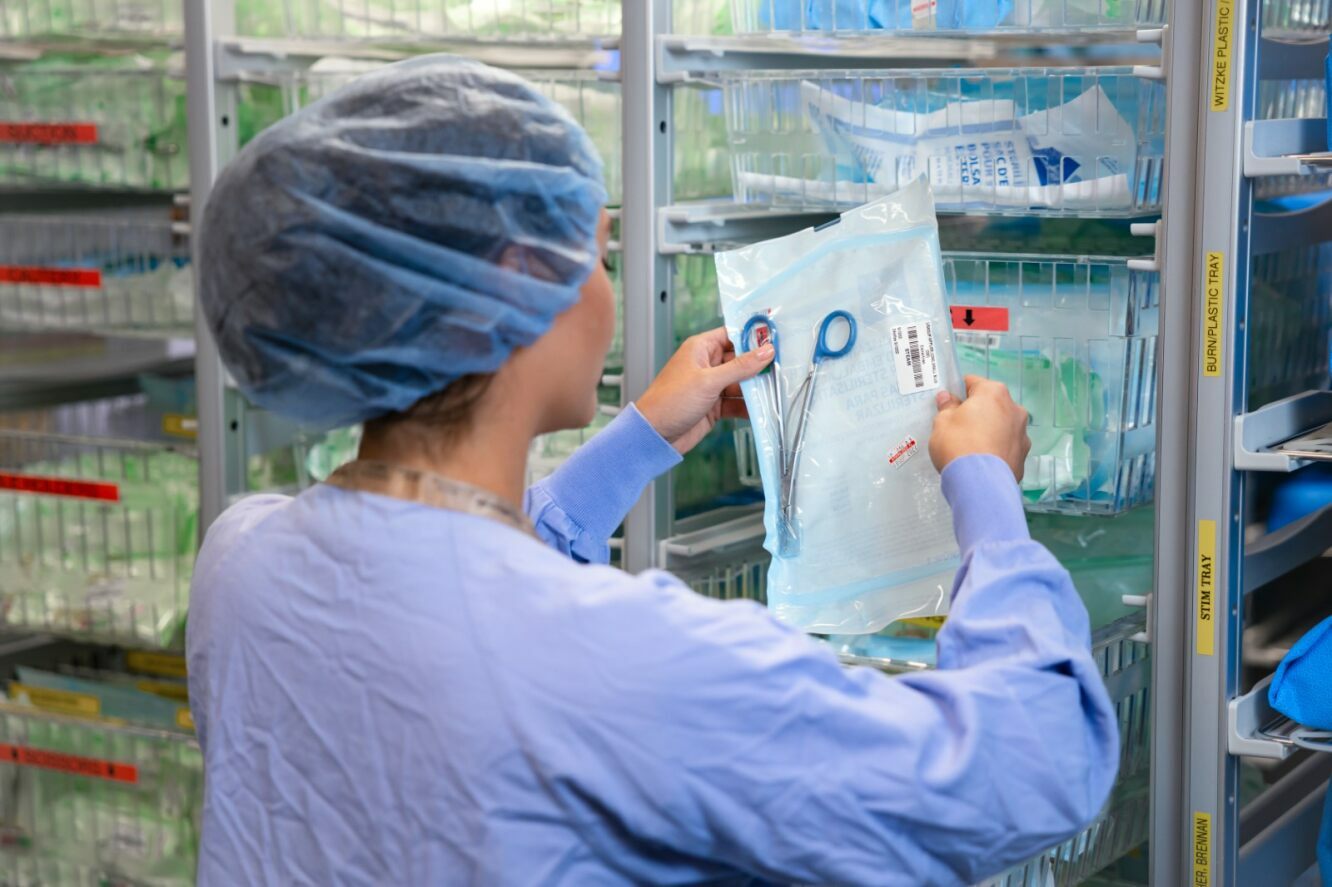
Everything that SPD handles must get to the end user in the best quality condition possible. And there are a LOT of factors that feed into the final product being perfect. This is what a Quality Management System (QMS) is designed to oversee. Quality includes processes like machine tests (washers, sonics, sterilizers, and more), water quality (check out AAMI ST108 for the new water quality standards), and even people processes (proper PPE, hand hygiene, and even departmental cleaning).
A robust QMS will cover all aspects of the SPD workflow to ensure each step in the process is being completed properly per regulations, standards, facility policies, and IFUs. A few checkpoints include:
- Checking detergent dilution rates at the frequency recommended by manufacturer
- Scheduled departmental cleaning of areas NOT covered by your EVS
- Inspection points after sterilization and before case cart assembly.
Until the instruments leave your SPD to be used, their care and quality rests in the technician’s hands. And if the facility maintains sterile storage areas and says that those are under the supervision of SPD, then routine cleaning, inspection, and auditing of those areas and products must be completed.
Taking pride in the quality of work produced, in the assurance that every instrument is patient-ready at any moment, and instilling this mindset in the department is the responsibility of every SPD technician and leader.
Sterile Processing Education
Certifications
Certification in the sterile processing industry isn’t required in most states, but it is highly encouraged. There are 2 main accreditation organizations in the United States of America that offer certification in the industry:
- HSPA: Healthcare Sterile Processing Association
- CBSPD: Certification Board for Sterile Processing and Distribution
Each organization offers different levels and specialties of certification for technicians and managers, including leadership and endoscope certifications.
There are various ways to earn certifications, but both require a certain number of hours of hands-on experience to qualify for the test. A technician can study from a manual, take an in-person class, take an online class, or be trained on the job, if a facility offers that option. It’s important for the student to know how they will learn best and prepare themselves accordingly.
Reading industry standards is also a great way to prepare for exams, though the standards are long and sometimes use difficult terminology. The key is to be patient and ensure that all material is being absorbed. Ask questions of those who have earned certifications, or join an online chat group like the one on HSPA’s webpage, where the people answering the questions are qualified professionals. There can be a lot of misinformation in social media groups, which leads a new technician to learning incorrect habits, and can be deadly to a patient.
Way of Life and Community for Sterile Processing Professionals
Now, social media isn’t all bad for sterile processing professionals. It’s a great way to find community and others who face similar struggles, or share triumphs with peers. Many SPD techs get siloed in their departments and feel like they’re the odd-person out. A lot of this is due to the fact that those outside of the perioperative loop simply don’t know sterile processing exists. It can be a complex topic at family holiday dinners and explanations become difficult when others don’t have the same technical knowledge.
Social media has become an excellent area for SPD professionals to “find their tribe.” There are a multitude of Facebook groups, and LinkedIn is positively bursting with SPD professionals who encourage, support, and cheer each other on every day. Some professionals have taken to TikTok or YouTube and made short training videos, or ones that feature positivity towards their fellow SP technicians.
Sterile Processing Conferences

One of the best ways for SP professionals to connect is at conferences. There are big conferences, like the ones hosted by HSPA and Censis Technologies, but there are also smaller ones, such as local HSPA chapter conferences. Beyond Clean, a global sterile processing podcast and education group, hosts multiple virtual conferences every year, giving the SP community a chance to connect and be educated.
Networking at conferences can sound like a daunting task, but it can be an enriching opportunity. It is an opportunity to connect with individuals who work in fields such as:
- Sterile processing
- Perioperative services
- Infection Prevention
- Vendor representatives
Each person has a unique story to tell, advice to give, and friendship to offer. Some of the connections made at conferences can outlast distances and time, especially thanks to modern technology. There are an abundance of viewpoints, experiences, and opportunities within this underappreciated industry that are available to everyone.
What is Sterile Processing to You?
The Sterile Processing industry is a small but mighty group of passionate and dedicated individuals. It’s a highly technical field with a neverending list of intricacies, standards, and changes that takes a unique mindset to thrive in. There are educational opportunities in many places, and a welcoming network to help from day one until retirement. If you’ve been in this industry for a while, what does it mean to you? If you’re new to this hidden world, what adventures are you looking forward to?
